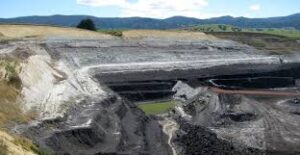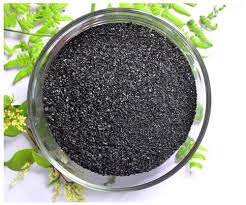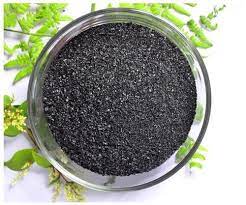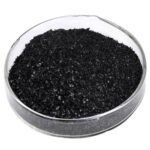Benefits of Humic Acid for Plants and Crops in Agriculture
What is Humic Acid?
Benefits of Humic acid and Fulvic acids are the final break-down constituents of the natural decay of plant and animal materials. These organic acids are found in pre-historic deposits. Now we will know about Humic Acid Substances. Humic matter is formed through the chemical and biological humification of plant and animal matter and through the biological activities of micro-organisms. Humic acids are complex molecules that exist naturally in soils, peats, oceans and fresh waters. The one source of humic acids are the sedimentation layers referred to as Leonardite. These layers were originally deep in the earth’s crust, but over many years have been exhumed to near-surface location. Humic acids are found in high concentration in these layers. Leonardite is organic matter, which has not reached the state of coal and differs from soft brown coal by its high oxidation degree as a result of the process of coal formation. It does not have any value as fuel. The decomposition of concentrated organic acids is a lengthy process taking millions of years in the natural environment. As plants and animals die they contribute their carbon back to the bottom of the bog. Over millions of years this cycle of organic matter is concentrated and compressed into layers in the earth.

Where does it come from?
One of the first recognized reserves of Leonardite came from the Dakotas, (named after a Mr. Leonard). These layers were not very deep which allowed for simple mining techniques. Since this early beginning, the term Leonardite has been widely used as a name for all humic and fulvic acid containing mined products. A recent discovery has been made in New Mexico of a concentrated organic acid reserve in Oxidized Lignite. These layers (or deposits) occur naturally very close to the surface. Over the last several thousand years they have become oxidized. This natural process has concentrated the humic acid content to upward of 70 percent. Through artificial means it is possible to chemically or mechanically oxidize Leonardite. However, using sources that have been oxidized naturally is much more economical.

What is its use in the field of Agriculture?
Leonardite is not a fertilizer. It acts as a conditioner for the soil and as a bio-catalyst and bio-stimulant for the plant. Humic acids are an excellent natural and organic way to provide plants and soil with a concentrated dose of essential nutrients, vitamins and trace elements. Compared to other organic products, Leonardite enhances plant growth (biomass production) and fertility of the soil. Another advantage of Leonardite is its long-term effectiveness, as it does not get consumed as quickly as animal manure, compost or peat. Leonardite decomposes completely, therefore it does not enter into nutritional competition with plants for nutrients like nitrogen. This is not the case with partially decomposed compost, whereby the organic substances in soil are rapidly consumed by microorganisms and mineralized entirely without humus formation.

What are the economical benefits?
Humic acids chelate nutrient compounds, especially iron in the soil, to make it available in a suitable form for plant utilization. In this way the nutrient supply of plants is optimized, there is an Increase of up to 70% in yield, accompanied by a reduction up to 30% in the use of fertilizers and pesticides. Better and healthier growth of green grass, ornamentals, agricultural crops and woods can be attained with the regular application of first-quality humic acids. With its inherent quality of soil conditioning the water holding capacity of soils is increased considerably, which means that the use of water can be reduced substantially. Best economic results can be obtained in light and sandy soils poor in humus, as well as on re-cultivation fields.

The diverse positive impacts of humic acids are to be observed particularly in such soils. This is true for almost all soils in dry and warm regions. As a result of the high mineralization rate of organic substances, providing these soils with stable humic acids is indispensable for the maintenance and improvement of soil fertility. The most important feature of humic acid lies in its ability to bind insoluble metal ions, oxides and hydroxides, and to release them slowly and continually to plants when required. Due to these properties, humic acids are known to produce three types of effects: physical, chemical and biological.
Humic acids physically modify the structure of the soil, with benefits such as:
- Improved structure of soil: It prevents high water and nutrient losses in light, sandy soils, simultaneously converting them into fruitful soils by way of decomposition. In heavy and compact soils, aeration of soil and water retention is improved; cultivation measures are facilitated.
- Prevents soil cracking, surface water runoff and soil erosion by increasing the ability of colloids to combine.
- Helps the soil loosen and crumble, and thus increases aeration of soil as well as soil workability. • Increases water holding capacity of soil and thus helps resist drought.
- Darkens the color of the soil and thus helps absorption of the sun’s energy.
Humic acids chemically change the fixation properties of the soil, with benefits such as:
- Neutralizes both acid and alkaline soils; regulates the pH-value of soils.
- Improves and optimizes the uptake of nutrients and water by plants.
- Acts as natural chelator for metal ions under alkaline conditions and promote their uptake by the roots.
- Becomes rich in both organic and mineral substances essential to plant growth.
- Retains water soluble inorganic fertilizers in the root zones and reduces leaching.
- Promotes the conversion of nutrient elements (N, P, K + Fe, Zn and other trace elements) into forms available to plants.
- Enhances the uptake of nitrogen by plants.
- Reduces the reaction of phosphorus with Ca, Fe, Mg and Al and liberates it into a form that is available and beneficial to plants. The productivity of particular mineral fertilizers is increased considerably.
- Liberates carbon dioxide from soil calcium carbonate and enables its use in photosynthesis.
- Helps to eliminate chlorosis due to iron deficiency in plants.
- Reduces the availability of toxic substances in soils.
Humic acids biologically stimulate the plant and the activities of micro-organisms such as:
- Stimulates plant enzymes and increase their production.
- Stimulates growth and proliferation of desirable micro-organisms in soil.
- Enhances plant’s natural resistance against diseases and pests.
- Stimulates root growth, especially vertically and enable better uptake of nutrients.
- Increases root respiration and root formation.
- Promotes the development of chlorophyll, sugars and amino acids in plants and aid in photosynthesis. • Increases vitamin and mineral content of plants.
- Thickens the cell walls in fruits and prolongs storage time.
- Increases germination and viability of seeds.
- Stimulates plant growth (higher biomass production) by accelerating cell division, increasing the rate of development in root systems and increasing the yield of dry matter.
- Increases the quality of yields; improves their physical appearance and nutritional value.
What are the Ecological Benefits?
The ecological benefits of humic acids are diverse and present profitable and effective solutions for environmental problems and the preservation of the environment. First of all, soils with a high content of humic acids are a guarantee for low nitrate leaching and for optimum nutrient efficiency. A well-developed root system, which is achieved by a high content of humic acids, and also prevents nitrate and pesticides mixing in with ground water. In addition, a low content of nitrate is an indicator and a prerequisite for appropriate “organic animal feeds”. It happens very often that growers use more fertilizers than plants can take up. This leads to nitrate concentration in soil, which is later to be found in ground water. Secondly, humic acids reduce the over-salination problem in the application of water-soluble mineral fertilizers. Humic acids are able to decrease high salt contents in soils and thus the resultant toxicities.

The NH4-toxicity of fertilizers containing ammonia is greatly reduced, which is of particular importance to young plants. Generally, humic acids reduce root burning which comes about through excessive salt concentrations in soils after fertilization; in case of permanent high levels of salt in soils. Also when humic acids are mixed with liquid fertilizers, the undesirable odor is reduced. Thirdly, humic acids are an effective means to fight against soil erosion. This is achieved both by increasing the ability of soil colloids to combine and by enhancing root system and plant development.
At AHPL we have Humic Acid Group available in the following varieties:
- Humic Acid Powder (Soluble & Partially soluble/Insoluble)
- Potassium Humate Shiny Flakes
- Super Potassium Humate Shiny Flakes
- Super Potassium Fulvic Humate Flakes
- Potassium Humate Shiny Crystals
- Humic Amino Shiny Granules
You can provide these benefits of humic substances to your crops/plants using a variety of application methods. 1–2 times per year is the normal application schedule for humic substances. Humic substances may be applied either directly to the soil or as foliar sprays.
How humic substances benefit plants beneath the soil:
It holds nutrients in a bio available form in the soil.
It increases root population and CO2 absorption.
It makes soil nutrient reserves available to plants in acceptable form.
It increases soil aeration & microbial activity.
It is a source of organic carbon for improved soil.
How humic substances benefits plants above the ground:
It improves nutrient use efficiency, reduced input requirements
It increases fruit setting during flowering, pollination & germination.
It enhances nutrient absorption through the stoma & leaf tissue.
It improves oxygen availability.
It accelerates the breakdown of cut stalks of cereal plants left out of the ground after harvesting & leaf residue.
Let us see some questions coming to mind in regards to its usage:
Will humic acid lower pH?
Humic Acid increases the availability of nutrients that are already in your soil and will naturally aerate the soil from the inside. It also will help to lower the pH of the soil and will flush high levels of salts out of the root zone.
Does compost contain humic acid?
Compost does contain humic acid, but not in a sufficient enough quantity to restore the humus levels of a depleted soil. Compost is decomposing organic matter that provides a food source to soil organisms, which in turn excrete material that plants can use as nutrients.
Can I mix humic acid with NPK?
It has macro nutrients Nitrogen, Phosphorous & Potassium: (20%) In NPK 20 20 20 – Concentrated Micronutrients which gives proper controlled growth along with organic humic acid which increases root density. The combination enhances flowering & fruit setting and overall development. These 3 together gives TREMENDOUS results on field.

For More Visit:- www.alligohorizon.com

 Previous Post
Previous Post